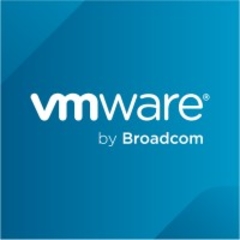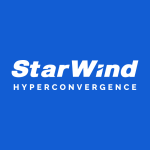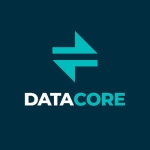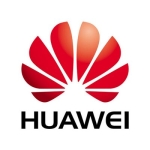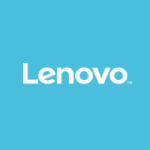What is our primary use case?
We primarily use vSAN for cloud automation, so we provide test workloads for specific test use cases for customers who want to do software testing. In these specific cases, we also use vSAN because it gives us flexibility from a profile perspective on how we roll out specific workloads and specific test scenarios, making it easier for us to actually deploy things in comparison to legacy storage platforms.
How has it helped my organization?
vSAN improved our organization by allowing us to deploy scenarios or workloads more easily because, from a vSAN perspective, we don't need to reconfigure underlying storage or anything else. We can actually adjust for each individual machine and individual workload characteristics. We don't have to deal with different types of disk shelves, rate groups, etc. We can directly take that off.
What is most valuable?
vSAN gives us a lot of advantages when we need to expand resources. We have an overall larger host infrastructure, and we split that up for specific customer tests and use cases. In that specific scenario, we can easily add more hosts or reduce the number of hosts in the environment. This is an advantage when we use vSAN.
We have pretty constant performance results, which are sometimes, on a normal three-tier storage architecture, harder for us to achieve because the customer doesn't want us to verify that the performance of a specific device works. What we typically have to test is that we have a constant scenario across different versions, platforms, and similar things. Here, vSAN gives us an advantage that we can actually work with it.
We can also create test cases, which is maybe not something in other customer scenarios, but for us, it's important. We can even throttle down performance or release more performance. So, we can run more precise test scenarios. If someone says, "We need to run this later on a relatively small or lower-scale edge device," we can actually configure vSAN in a way that reduces the number of resources.
When we do more scaled load testing, we can run more dense workloads and still have the same results across all specific nodes. Otherwise, we could have that noisy neighbor effect when we work with legacy output.
What needs improvement?
Stability can be improved. Adding all these new features is nice, but we are now at the level where most of the features you need in production are there. The stability is not from a day-to-day operations perspective, but more from a supportability perspective, because currently some of the support scenarios require you to completely evacuate hosts or the complete cluster. That sometimes can be a stretch. This would clearly be an improvement if the support teams were given additional tools to make that easier.
Upgradability could be a bit easier sometimes. We are now where vSAN can be updated without ESXi, but there is still enough dependency. So that would be good if that actually would be uncoupled even more.
Dashboards are there, and we use vROps as well. So, we have all the beauty of capacity planning and everything over there. That's not really something where we need a lot of other things.
For how long have I used the solution?
I have been using this solution for six years.
What do I think about the stability of the solution?
We had some issues in very early releases, and it has become much better over time. Stability with vSAN has come it's way. When we look at 5.5, then 6.0, 6.2, 6.6, 6.7 it has moved ahead every time. Clearly, 5.5 and 6.0 have their issues, but the product is constantly improving.
We need to keep in mind that we are talking about relatively new technology. Whenever you are adopting something early on, you need to accept not everything runs as smoothly as you would expect it to. However, we can see the progress with vSAN, and that's one of the reasons why we built our platforms on it.
What do I think about the scalability of the solution?
Scalability for us is an important part of the product because we resize clusters all the time in our environment. We clean them out and actually start from scratch. With vSAN, it's easier for us to add nodes. If in a test scenario that we are building, we currently might have only four or five nodes in the beginning. If we add more, it's an easy add-on for us. It's easier for us to manage it this way than with legacy storage, where we would have to add additional disk shelves.
How are customer service and support?
Tech support with vSAN is a mixed relationship. We have had issues with tech support because sometimes VMware comes out of the software-defined space.
In the software-defined space, you start off with the approach that you can basically tell the customer to change everything. However, vSAN needs a different approach. It's a storage platform. I cannot actually say, "You need to upgrade everything or replace everything." That sometimes has been a bit of a challenge with the support teams, explaining to them, "No, it's not an option that we completely upgrade the stack. We need to get a different fix for it."
However, over the last few years, it has improved. I think VMware gets the story now that doing support on the storage side is different than for a lot of the other software programs. So, I think we are getting there, but it could definitely improve.
Which solution did I use previously and why did I switch?
We previously used Legacy 3-tier storage architecture with a multi-tier disk approach.
How was the initial setup?
From a setup perspective with vSAN, I was involved in the original architecture and design of our specific platform. It was pretty straightforward. It's more or less point-and-click. The most challenging part is choosing the correct hardware and platform behind it. It's not so much about the fact of how to deploy vSAN.
Once the physical hardware is there, the ESXi is installed, and configuring vSAN is pretty straightforward. It's just a few clicks. It's much easier than most other storage platforms, but the challenge is to identify the correct hardware for the use case. There are ReadyNotes and all types of other solutions, but sometimes the ReadyNote configuration doesn't match exactly what you need.
You need to be careful with some of these vendors because they might upgrade individual devices. That was one case that we had, and all of a sudden that version was no longer supported. So, we had to fight the battle of whether it is now the fault of the hardware vendor versus VMware. Those are scenarios where I can always only warn people. It's like sticking very strictly with what's in the HCL because it's nice that vSAN tells you in the UI that you are in an unsupported state, but at that point, you have the hardware already in your environment, cabled up, and in production. So, you should identify that early on. However, I think that's going to get better as well.
What was our ROI?
ROI is difficult for us to deal with because of our approach and what we do in our business with test and demo cases. It's hard for us to judge because some of the hardware and stuff we get during tests is actually provided by vendors.
Therefore, I don't necessarily have what an online customer would pay for it. We still pay for the stuff. But it's a different story.
ROI from an administrative perspective is clearly much better because I only have to deal with one user interface. I can go into one place and be on top of it for some scenarios, even using vCloud Director. So, it's much easier to use vSAN from that perspective because it's all in the vSphere Client. I can configure my profiles and use them on all the other tools. Whereas, in the legacy storage approach, I still have to deal with all these additional details on each individual storage, which can be challenging, even though some of these vendors provide integration into the vSphere Client. In many ways, that's just the HTML UI of their storage device in the vSphere Client. That's not really integration. It's still a different UI. It's still a different training effort.
What's my experience with pricing, setup cost, and licensing?
Setup cost, pricing, and licensing should be secondary factors. We talk about primary system storage, which if not performing well or if the storing is reliable, can have a massive business impact.
Which other solutions did I evaluate?
We evaluated different 3-tier approaches, 2-tier and HCI approaches.
What other advice do I have?
I would rate the solution somewhere around an eight out of ten. It is in the perfect place. There is room for improvement, but with the current versions, we are in a good stage.
Which deployment model are you using for this solution?
On-premises
Disclosure: PeerSpot contacted the reviewer to collect the review and to validate authenticity. The reviewer was referred by the vendor, but the review is not subject to editing or approval by the vendor.

